Understanding the Connection Between Eco-Friendly Gardening and Wildlife Conservation
In a world where urbanization and industrialization are rapidly taking over natural habitats, the importance of eco-friendly gardening cannot be overstated. Not only does it allow us to create beautiful green spaces, but it also plays a crucial role in wildlife conservation. By adopting sustainable gardening practices, we can help restore the balance of our ecosystems and provide vital habitats for various species. Have you ever thought about how your garden could be a sanctuary for birds, bees, and other wildlife? Well, it can be, and it starts with understanding the connection between our gardening choices and the health of the planet.
Eco-friendly gardening is all about working with nature rather than against it. This means choosing methods that promote biodiversity and protect the environment. When we think about biodiversity, we often picture lush forests or sprawling meadows, but even our backyards can contribute to this rich tapestry of life. By creating diverse plant life in our gardens, we not only beautify our surroundings but also support a variety of species that rely on these plants for food and shelter. Imagine your garden as a small ecosystem, teeming with life and energy, where every plant and creature plays a part in a larger story.
One of the most significant benefits of eco-friendly gardening is its ability to enhance resilience against pests and diseases. Just like a well-balanced diet keeps us healthy, a diverse garden can fend off threats naturally. When we incorporate a variety of plants, we create habitats for beneficial insects that help control pests. Think of it as inviting nature's own pest control squad into your garden! This not only reduces the need for harmful chemicals but also encourages a thriving ecosystem where wildlife can flourish.
As we delve deeper into this topic, it's essential to recognize the role that gardeners play in promoting biodiversity. Each plant choice, every gardening technique, and even the layout of our gardens can have profound implications for wildlife conservation. Are you ready to discover how you can transform your garden into a haven for wildlife? Let’s explore the various eco-friendly gardening techniques that can help us achieve this goal.
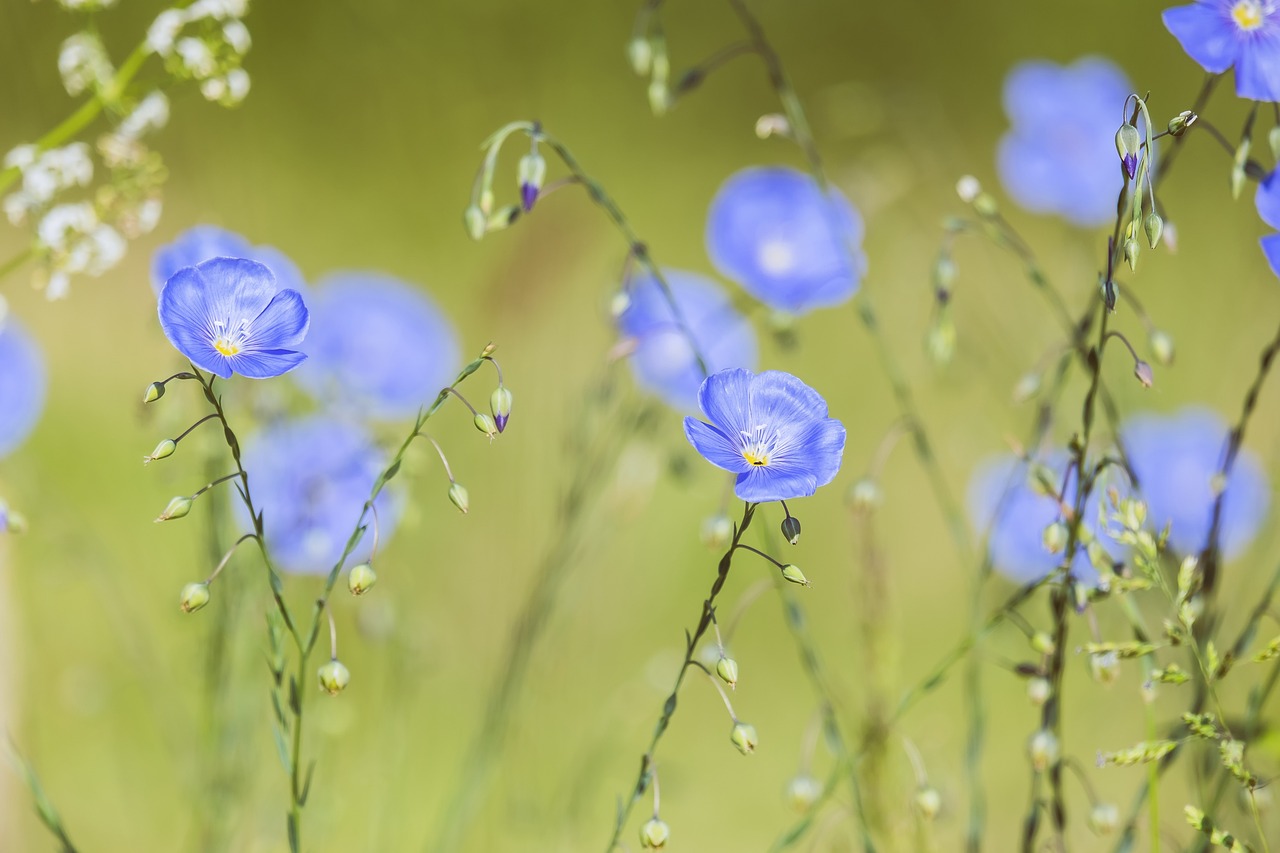
The Importance of Biodiversity
Biodiversity is not just a buzzword thrown around by environmentalists; it is the very foundation of a stable and thriving ecosystem. Imagine a garden filled with a variety of plants, each contributing its unique role to the environment. This diversity is essential because it supports different species, creating a balanced environment that can withstand the challenges posed by pests and diseases. Without biodiversity, our gardens would be like a one-note song, lacking harmony and resilience.
When we think about biodiversity, we often picture vast forests or sprawling savannas, but gardens can play a crucial role in this equation too. A diverse garden can attract a myriad of species, including pollinators such as bees and butterflies, birds, and beneficial insects that help control pest populations. The more varied the plant life, the more niches are created for different species to thrive. This is where the magic happens—each plant and animal interacts in a web of life that sustains the ecosystem.
Here are some key benefits of maintaining biodiversity in your garden:
- Enhances Resilience: A diverse ecosystem is more resilient to diseases and pests. If one species is affected, others can fill the gap, ensuring the garden remains healthy.
- Supports Pollination: Diverse plant life attracts various pollinators, which are essential for the reproduction of many plants.
- Improves Soil Health: Different plants contribute to soil health in unique ways. For instance, legumes can fix nitrogen in the soil, benefiting other plants.
- Encourages Natural Pest Control: A variety of plants can attract beneficial insects that naturally keep pest populations in check.
Moreover, biodiversity in gardens contributes to the larger ecosystem. Urban areas, often devoid of natural habitats, can benefit immensely from gardens that incorporate a variety of species. These green spaces act as vital corridors for wildlife, allowing them to move and thrive even in densely populated areas. Think of your garden as a small sanctuary, a refuge that not only nurtures plants but also supports the wildlife that depends on them.
In conclusion, the importance of biodiversity in gardening cannot be overstated. By fostering a diverse array of plants, gardeners play a pivotal role in promoting ecological balance and resilience. So next time you’re out in your garden, take a moment to appreciate the variety of life around you. Each flower, insect, and bird is a part of a greater story—a story that you can help write by embracing biodiversity in your gardening practices.

Eco-Friendly Gardening Techniques
When it comes to nurturing our planet while cultivating our gardens, are the superheroes we never knew we needed. These practices not only enhance the beauty of our outdoor spaces but also play a pivotal role in wildlife conservation. Imagine a garden that not only blooms with vibrant colors but also buzzes with life—birds chirping, bees buzzing, and butterflies fluttering. This is the magic that eco-friendly gardening can create!
One of the most significant techniques is organic gardening, which focuses on eliminating harmful chemicals that can disrupt the delicate balance of our ecosystems. By using organic methods, we foster a safe haven for beneficial insects, birds, and other wildlife. Techniques like composting, crop rotation, and natural pest control are not just buzzwords; they are essential practices that help maintain soil health and promote a thriving garden.
Organic gardening is like throwing a lifeline to Mother Nature. It’s about working with nature rather than against it. For instance, composting is a fantastic way to enrich your soil with nutrients while reducing waste. When you compost, you’re not just throwing kitchen scraps into a bin; you’re creating a rich, organic matter that attracts earthworms and other beneficial organisms. These little critters are nature’s gardeners, aerating the soil and improving its structure. Without them, our gardens would struggle to thrive. Additionally, composting can help retain moisture in the soil, which is vital during dry spells.
Another organic technique is natural pest control. Instead of reaching for chemical pesticides, consider methods such as companion planting, where certain plants are grown together to deter pests naturally. For example, planting marigolds alongside vegetables can repel aphids and nematodes. You can also introduce predatory insects like ladybugs and lacewings, which feast on pests that threaten your plants. This not only protects your garden but also supports the local ecosystem.
Choosing native plants is another essential eco-friendly technique that can significantly impact local wildlife. Native plants are like the local cuisine for wildlife—they’re familiar, nutritious, and provide the right shelter and food for various species. By incorporating these plants into your garden, you’re not just beautifying your space; you’re creating a supportive habitat for birds, butterflies, and beneficial insects. Native plants are adapted to the local climate and soil conditions, which means they require less water and maintenance compared to non-native species. This makes them an excellent choice for sustainable gardening.
In summary, adopting eco-friendly gardening techniques is akin to becoming a steward of the environment. By focusing on organic practices and selecting native plants, you’re not only enhancing your garden’s beauty but also contributing to the greater good of wildlife conservation. So, roll up your sleeves, dig in, and let’s cultivate a greener, more vibrant world together!

Organic Gardening Practices
When we think about gardening, the first thing that often comes to mind is the beautiful blooms and luscious fruits. However, the true essence of gardening goes beyond just aesthetics; it involves cultivating a healthy ecosystem. play a pivotal role in this journey, allowing us to create a flourishing environment that not only benefits our plants but also supports a diverse array of wildlife. By eliminating harmful chemicals, organic gardening fosters a safe haven for beneficial insects, birds, and other creatures that contribute to a balanced ecosystem.
One of the cornerstones of organic gardening is composting. This technique not only enriches the soil but also reduces waste, making it a vital practice for eco-conscious gardeners. By composting kitchen scraps and yard waste, we can create nutrient-rich soil that boosts plant health and attracts wildlife. Just imagine your garden as a thriving community where earthworms, beneficial microbes, and even small mammals find a home! Composting not only supports biodiversity but also enhances the soil structure, improving water retention and aeration, which is essential for plant growth.
Another effective organic gardening practice is crop rotation. This technique involves changing the types of crops grown in a particular area each season to prevent soil depletion and break the cycle of pests and diseases. By rotating crops, we can maintain soil fertility and reduce the need for chemical fertilizers and pesticides. It’s like giving your garden a fresh start every year! Additionally, incorporating natural pest control methods into your gardening routine can significantly benefit your garden's ecosystem. Strategies such as companion planting, where certain plants are grown together to deter pests, and introducing predatory insects, like ladybugs, can help keep harmful pests at bay while protecting beneficial species.
To sum it up, organic gardening practices not only yield healthier plants but also contribute to a thriving ecosystem. By embracing techniques like composting, crop rotation, and natural pest control, we can create a welcoming environment for wildlife. Think of your garden as a vibrant neighborhood where every plant and creature plays a role in the community's well-being. With every seed you plant and every organic method you employ, you're not just growing a garden; you're nurturing a sanctuary for nature.
- What is organic gardening? Organic gardening is a method of gardening that avoids the use of synthetic fertilizers, pesticides, and herbicides, focusing instead on natural processes and materials.
- How does composting benefit my garden? Composting enriches the soil, enhances its structure, improves moisture retention, and provides essential nutrients to plants, all while reducing waste.
- What are some natural pest control methods? Natural pest control methods include companion planting, introducing beneficial insects, and using organic repellents made from natural ingredients.
- Why should I choose native plants for my garden? Native plants are adapted to local conditions and provide food and habitat for local wildlife, promoting a balanced ecosystem.
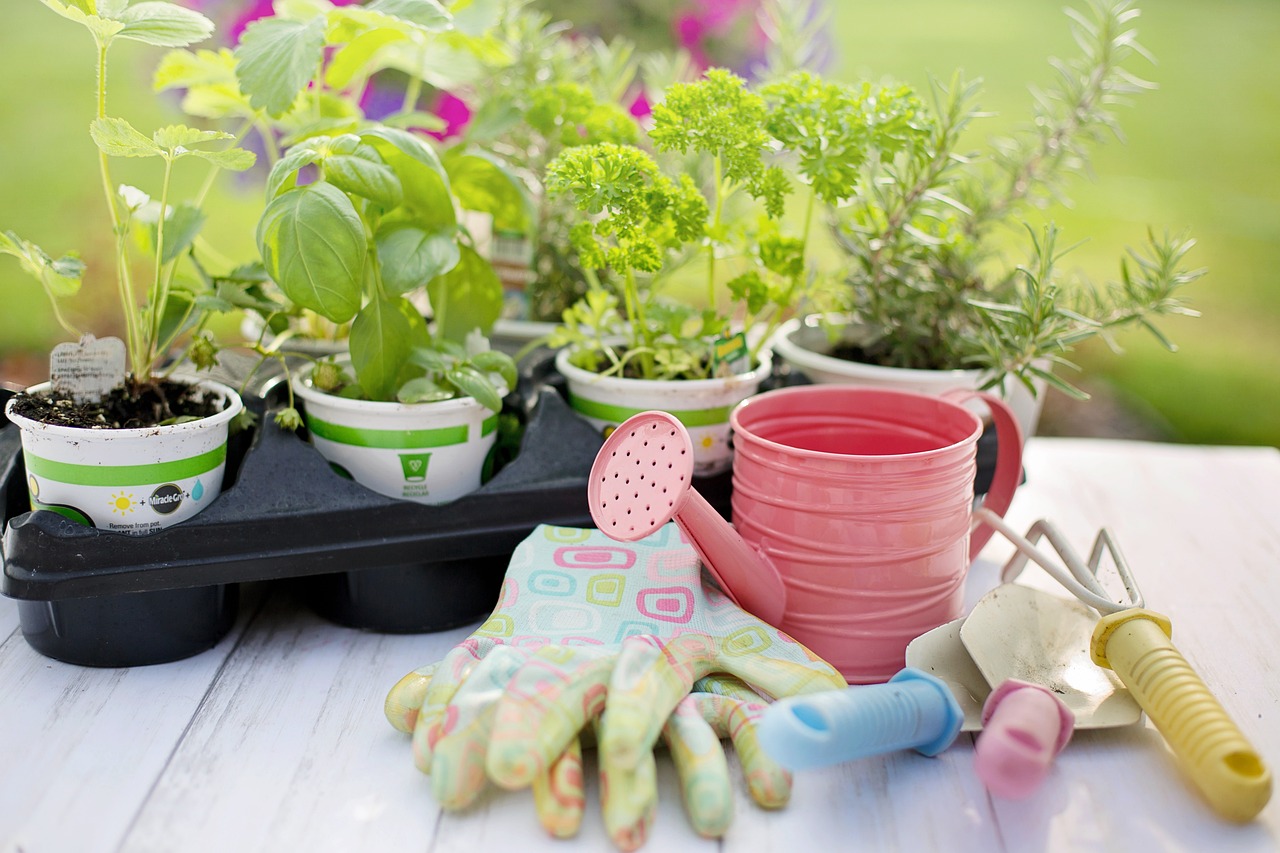
Composting Benefits
Composting is not just a trendy gardening practice; it’s a powerful tool that enriches soil health while simultaneously reducing waste. Imagine transforming your kitchen scraps and yard debris into a nutrient-rich soil amendment that benefits both your garden and the environment. By composting, you’re not only creating a sustainable cycle of growth but also supporting biodiversity in your garden.
One of the most significant benefits of composting is its ability to enhance soil structure. Healthy soil is vital for thriving plants, and compost acts like a sponge, retaining moisture and nutrients that plants need to grow. When you add compost to your garden, you’re providing a diverse range of microorganisms that improve soil fertility. These microorganisms play a crucial role in breaking down organic matter, making nutrients available for your plants. This process is akin to having a personal team of tiny workers tirelessly improving your garden’s health.
Furthermore, composting helps to reduce landfill waste. Did you know that a significant portion of what we throw away can actually be composted? By diverting organic waste from landfills, we not only minimize the amount of waste but also reduce methane emissions—a greenhouse gas that contributes to climate change. It’s like giving a second life to your food scraps, turning what would be waste into a valuable resource for your garden.
Composting also attracts a variety of wildlife to your garden, creating a vibrant ecosystem. As you enrich your soil, you’ll find that beneficial insects, birds, and even small mammals are drawn to the nutrients and the habitat you’re providing. This increased biodiversity can lead to a more balanced garden, where natural pest control mechanisms come into play. For instance, when you have a healthy population of ladybugs and lacewings, they help keep aphid populations in check, reducing the need for chemical pesticides.
In summary, the benefits of composting extend far beyond just improving your garden's soil. It’s an eco-friendly practice that enhances plant health, reduces waste, and fosters a thriving ecosystem. So, why not start composting today? You’ll be amazed at how this simple act can contribute to a healthier planet and a more vibrant garden!
- What can I compost? You can compost fruit and vegetable scraps, coffee grounds, eggshells, grass clippings, leaves, and small branches. Avoid meat, dairy, and oily foods as they can attract pests.
- How long does it take to make compost? Composting can take anywhere from a few weeks to several months, depending on the materials used and the composting method.
- Do I need a compost bin? While a compost bin can help contain materials and keep your compost neat, you can also compost in a simple pile in your backyard.
- How do I know when my compost is ready? Finished compost should be dark, crumbly, and have an earthy smell. It should no longer resemble the original materials you added.
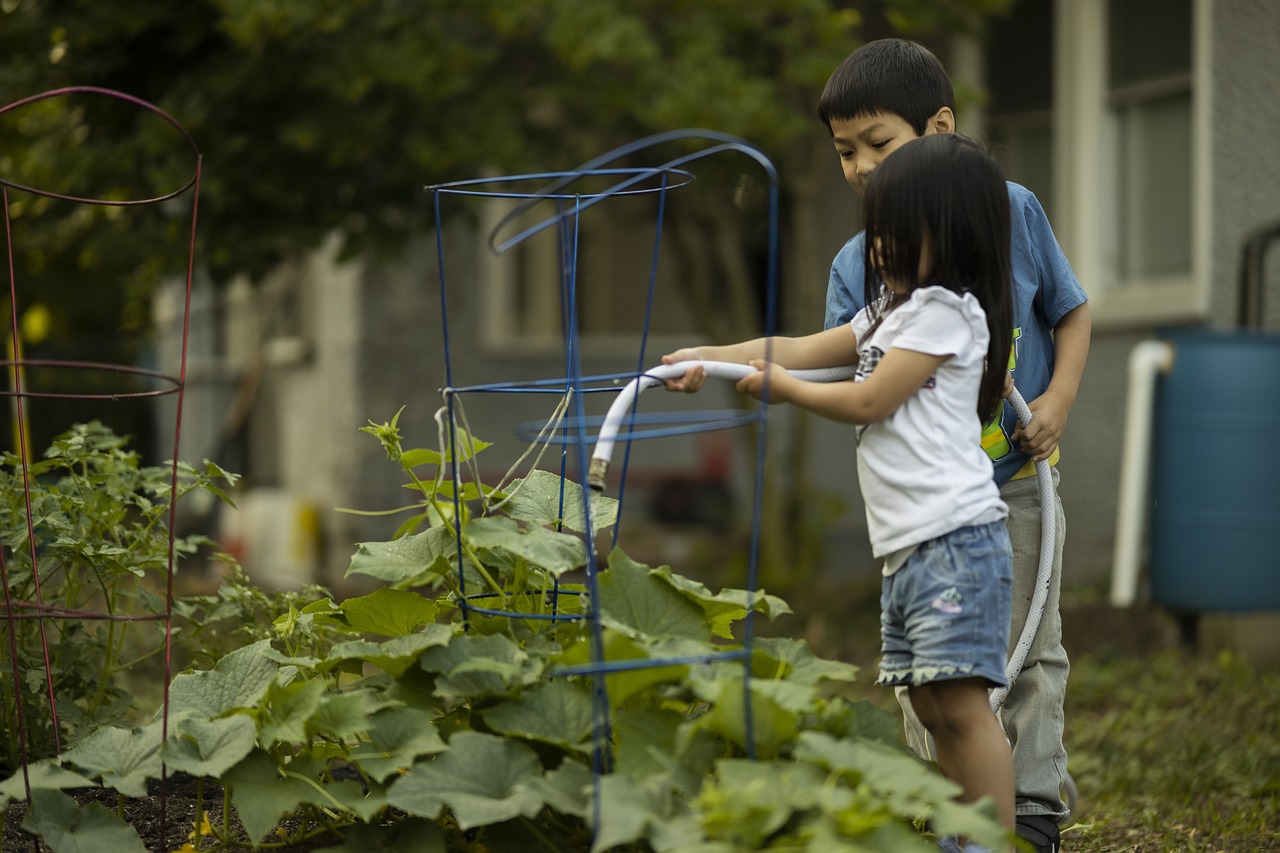
Natural Pest Control
When it comes to maintaining a thriving garden, pest control can often feel like an uphill battle. However, the good news is that you don’t have to resort to harsh chemicals that can harm beneficial insects and the overall ecosystem. methods are not only effective but also promote a healthier garden environment. Imagine your garden as a mini-ecosystem, where every creature plays a role; by using natural techniques, you can ensure that this balance remains intact.
One of the most effective strategies for natural pest control is companion planting. This method involves planting certain crops together that can naturally deter pests. For instance, marigolds are known to repel nematodes and other harmful insects, making them a perfect companion for vegetables like tomatoes. By strategically placing these plants throughout your garden, you can create a natural barrier against pests while also enhancing the visual appeal of your garden.
Another powerful tool in your natural pest control arsenal is the introduction of predatory insects. Ladybugs, lacewings, and predatory wasps are all excellent allies in the fight against pests like aphids and caterpillars. By attracting these beneficial insects to your garden, you not only reduce the pest population but also foster a more diverse ecosystem. You can attract these helpful critters by planting flowers such as dill, fennel, and yarrow, which serve as both food and habitat.
Additionally, maintaining a healthy garden ecosystem is crucial for pest control. This means ensuring that your plants are well-nourished and adequately watered, as stressed plants are more susceptible to pest infestations. Techniques such as crop rotation can also help disrupt the life cycles of pests, reducing their numbers over time. By rotating your crops each season, you can prevent pests from becoming established and help maintain soil health.
To summarize, natural pest control is about embracing the power of nature to keep your garden healthy and vibrant. By utilizing companion planting, attracting predatory insects, and maintaining a balanced ecosystem, you can effectively manage pests without resorting to harmful chemicals. This not only benefits your garden but also contributes to the larger goal of wildlife conservation, creating a sanctuary for beneficial insects and animals alike.
- What is natural pest control? Natural pest control refers to methods of managing pests without the use of synthetic chemicals, focusing instead on biological and ecological techniques.
- How can I attract beneficial insects to my garden? You can attract beneficial insects by planting a variety of flowers and herbs that provide nectar and pollen, as well as by creating habitats like insect hotels.
- Is companion planting really effective? Yes, companion planting can be very effective in deterring pests and promoting plant health by creating a more diverse and balanced ecosystem.
- What are some common natural pest control methods? Common methods include companion planting, introducing predatory insects, using barriers like row covers, and maintaining healthy soil through composting and crop rotation.

Native Plant Selection
When it comes to supporting local wildlife, choosing native plants is like giving a warm welcome to your garden’s natural inhabitants. Native plants are those that have evolved in a specific region and have adapted to the local climate, soil, and wildlife. By incorporating these plants into your garden, you’re not just beautifying your space; you’re also creating a mini-ecosystem that provides essential resources for various species. Imagine your garden as a vibrant neighborhood where every plant plays a role, offering food and shelter to local birds, insects, and other creatures.
One of the most significant advantages of native plants is their ability to thrive with minimal maintenance. Since they are well-suited to the local environment, they require less water, fertilizer, and pesticides compared to non-native species. This not only saves you time and effort but also reduces your garden’s ecological footprint. Plus, with less reliance on chemical treatments, you’re fostering a healthier habitat for beneficial insects, such as butterflies and bees, that are crucial for pollination.
Incorporating native plants into your garden can also enhance biodiversity. A diverse plant community attracts a variety of wildlife, creating a balanced ecosystem. For instance, some native flowers provide nectar for pollinators, while others produce seeds that feed birds and small mammals. By planting a mix of native species, you can create a rich tapestry of life that supports various organisms. Here are a few examples of native plants that can enhance your garden:
| Plant Name | Wildlife Benefit | Best Growing Conditions |
|---|---|---|
| Black-eyed Susan | Attracts butterflies and bees | Full sun, well-drained soil |
| Milkweed | Host plant for monarch butterflies | Full sun, moist soil |
| Wild Bergamot | Provides nectar for hummingbirds | Full sun to partial shade, well-drained soil |
Moreover, native plants are often more resilient to pests and diseases, which means you’ll spend less time worrying about infestations and more time enjoying your garden. They’ve developed natural defenses over time, allowing them to coexist harmoniously with local wildlife. This resilience contributes to a more stable ecosystem, where plants and animals thrive together.
In conclusion, selecting native plants is not just a gardening choice; it's a commitment to environmental stewardship. By choosing these plants, you are actively participating in conservation efforts and promoting a healthier ecosystem. So, the next time you're planning your garden, think of it as an opportunity to create a sanctuary for wildlife, where every bloom contributes to the greater ecological balance.
- What are native plants? Native plants are species that naturally occur in a specific region and have adapted to the local climate and soil conditions.
- Why should I choose native plants for my garden? Native plants require less maintenance, are more resilient to local pests and diseases, and support local wildlife, enhancing biodiversity.
- How can I find native plants for my garden? You can find native plants at local nurseries, garden centers, or through native plant societies in your area.
- Do native plants require special care? Generally, native plants are easier to care for as they are well-adapted to the local environment. However, they may still need some attention during their establishment phase.

Creating Wildlife Habitats
Gardens can serve as vital habitats for wildlife, acting as small sanctuaries where various species can thrive amidst urban or suburban landscapes. When we think about creating a wildlife-friendly garden, it’s essential to recognize that it’s not just about planting a few flowers or putting out bird feeders; it’s about designing a holistic environment that meets the needs of different creatures. Imagine your garden as a bustling community, where every plant and structure plays a role in supporting the local ecosystem. By incorporating thoughtful elements, you can transform your space into a thriving habitat that attracts birds, insects, and other wildlife.
One of the most effective ways to create a welcoming environment is to incorporate water features. Ponds, birdbaths, or even simple water bowls can be a game-changer. These features not only provide essential hydration for birds and insects but also serve as breeding grounds for amphibians and a habitat for aquatic plants. For instance, a small pond can attract frogs, dragonflies, and a variety of birds, turning your garden into a lively ecosystem. When installing a water feature, consider adding native plants around it to enhance its natural look and provide additional shelter for wildlife.
Additionally, providing shelter is crucial for wildlife survival. Just like humans need homes, animals require safe spaces to rest, breed, and hide from predators. You can create natural shelters by incorporating elements such as:
- Brush piles: These are great for small mammals and insects, offering them a safe retreat.
- Birdhouses: Installing birdhouses of varying sizes can attract different bird species, providing them with nesting sites.
- Native shrubs: Planting native shrubs not only offers food but also serves as cover for birds and small animals.
Moreover, consider the layout of your garden. A well-planned design can create a variety of microhabitats. For example, you might have sunny areas for butterflies and shady spots for birds to cool off. The more diverse the environment, the more species it can support. Think of your garden as a patchwork quilt, where each piece contributes to the overall beauty and function of the habitat.
Lastly, be mindful of the types of plants you choose. Selecting native plants is vital, as they are adapted to the local climate and soil conditions, making them more resilient and beneficial to local wildlife. Native plants provide essential food sources for pollinators like bees and butterflies, while also offering shelter for various species. By prioritizing native flora, you’re not only enhancing your garden’s aesthetic appeal but also playing a significant role in conserving local biodiversity.
Q: How can I attract more birds to my garden?
A: To attract more birds, provide a mix of food sources, such as seeds, berries, and nectar-rich flowers. Additionally, installing birdhouses and water features can create a welcoming environment for various bird species.
Q: What types of native plants should I consider for my garden?
A: The best native plants depend on your region, but common options include coneflowers, black-eyed Susans, and milkweed, which are excellent for attracting pollinators.
Q: How do I maintain a wildlife-friendly garden?
A: Regular maintenance involves avoiding chemical pesticides, allowing some areas to grow wild, and ensuring that water features are clean and safe for wildlife.
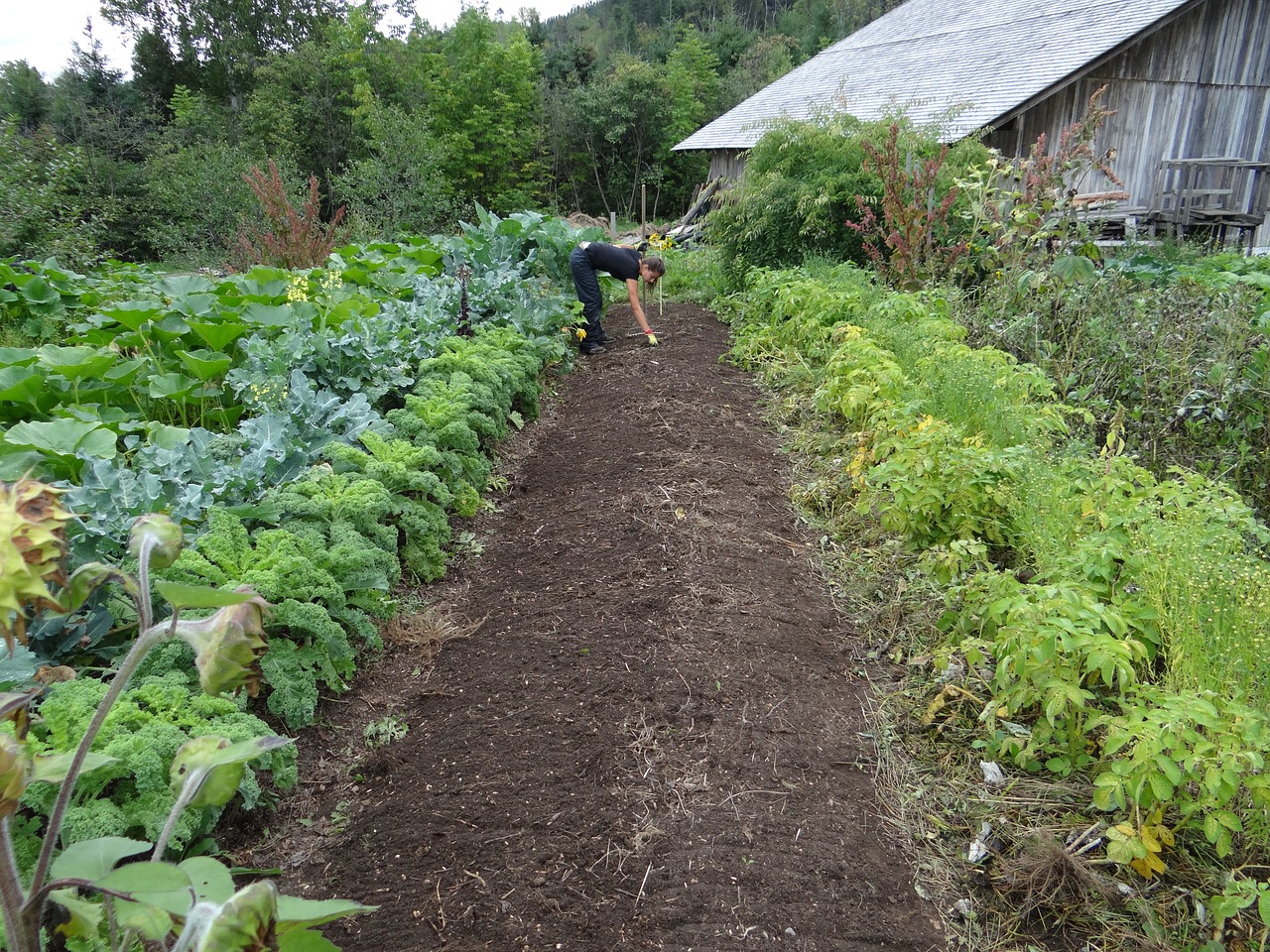
Water Features
When it comes to creating a vibrant and inviting garden, incorporating can be a game changer. Not only do they add a stunning visual element to your outdoor space, but they also play a crucial role in attracting and supporting wildlife. Imagine the gentle sound of trickling water, the sight of birds splashing around, and the serene ambiance that a pond or birdbath can bring to your backyard. These features provide essential resources for various species, making your garden a sanctuary for wildlife.
Water features come in many forms, from small birdbaths to elaborate ponds. Each type serves a unique purpose and can cater to different wildlife needs. For instance, a simple birdbath can be a refreshing oasis for birds, while a pond can support a diverse ecosystem, including frogs, fish, and beneficial insects. Here are some key benefits of adding water features to your garden:
- Hydration: Water sources are vital for wildlife, especially during dry spells. Birds, insects, and even mammals rely on these features for hydration.
- Habitat: Ponds can become mini-ecosystems, providing habitat for amphibians, aquatic plants, and invertebrates, which in turn support larger wildlife.
- Pollinator Attraction: Water features can attract pollinators like bees and butterflies, which are essential for plant reproduction.
Moreover, the presence of water can enhance the overall biodiversity of your garden. A pond, for example, can support a variety of aquatic plants, which provide food and shelter for fish and insects. The plants also help filter the water, creating a healthier environment for all the inhabitants. Additionally, consider adding native plants around your water feature, as they are adapted to local conditions and can thrive with minimal maintenance.
To create a water feature that truly benefits wildlife, think about the following design elements:
| Element | Description |
|---|---|
| Pond Depth | A depth of at least 2 feet is ideal for supporting fish and preventing the pond from freezing solid in winter. |
| Gradual Slopes | Sloped edges allow animals to access the water safely and help prevent erosion. |
| Plant Diversity | Include a mix of submerged, floating, and marginal plants to support different wildlife species. |
Incorporating water features into your garden is not just about aesthetics; it’s about creating a thriving ecosystem that supports wildlife and promotes biodiversity. So, whether you opt for a simple birdbath or a more complex pond, remember that every drop counts in the journey towards conservation. By providing these essential resources, you’re not only enhancing your garden but also making a positive impact on the local wildlife population.
Q: What types of water features are best for attracting wildlife?
A: Birdbaths, ponds, and even small fountains can attract various wildlife. The key is to ensure that the water is clean and accessible.
Q: How do I maintain water features to ensure they are wildlife-friendly?
A: Regularly clean the water features to prevent algae buildup and ensure the water remains fresh. Avoid using chemicals that could harm wildlife.
Q: Can I use fish in my garden pond?
A: Yes, fish can be a great addition to a pond, but it's essential to choose species that are compatible with your local ecosystem.
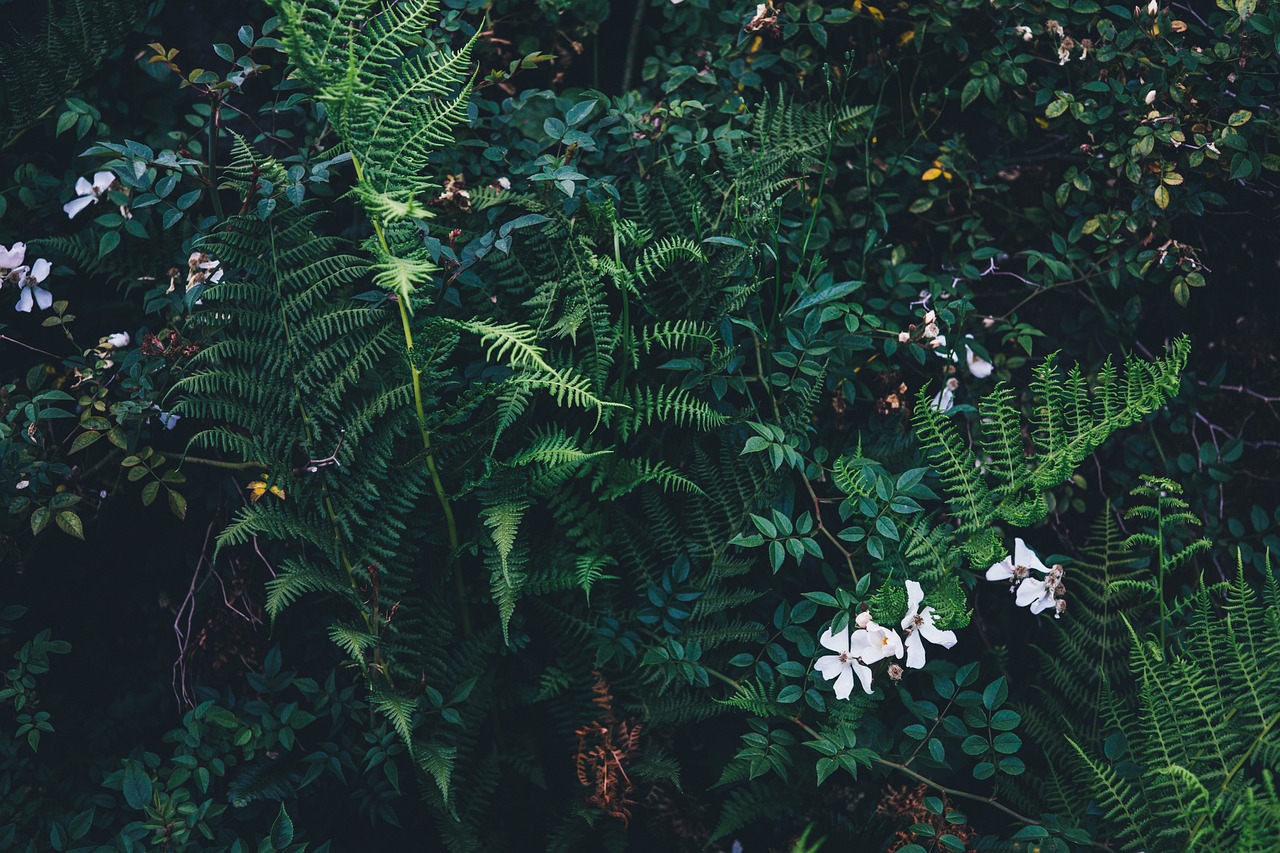
Providing Shelter
Creating shelter in your garden is not just a nice touch; it's a crucial element for the survival of various wildlife species. Think of your garden as a bustling neighborhood where birds, insects, and small mammals need a place to call home. Just like we seek comfort in our houses, these creatures need safe spaces to rest, breed, and escape from predators. By incorporating natural elements into your garden design, you can transform it into a haven for wildlife.
One effective way to provide shelter is by using brush piles. These piles, made up of twigs, branches, and leaves, create a cozy environment for small animals like rabbits and hedgehogs. Not only do they offer protection from the elements, but they also provide a safe spot to hide from predators. Imagine a little rabbit peeking out from behind a pile of leaves, feeling secure and snug. This simple addition can significantly enhance your garden's biodiversity.
Another fantastic option is to install birdhouses. These charming structures come in various designs and sizes, catering to different bird species. By placing birdhouses in your garden, you're inviting feathered friends to make their homes right in your backyard. It's like throwing a welcome party for them! Ensure that the birdhouses are made from natural materials and are positioned at varying heights to attract a diverse range of birds. The joy of watching these birds flit about and raise their young is incredibly rewarding.
Additionally, incorporating native shrubs into your landscape can provide essential shelter. Native plants are adapted to the local environment and are more appealing to local wildlife. They offer food and cover for insects, birds, and small mammals. Imagine a beautiful native flowering shrub buzzing with bees and attracting butterflies. Not only are you enhancing the aesthetic appeal of your garden, but you're also creating a vibrant ecosystem.
Lastly, consider adding features like rock piles or log piles. These not only serve as great shelter for reptiles and insects but also contribute to the natural beauty of your garden. As the sun warms the rocks, lizards can bask, while beetles and other beneficial insects can find refuge in the crevices. It's a win-win situation where your garden thrives, and wildlife flourishes.
In summary, providing shelter in your garden is a vital step toward promoting wildlife conservation. By integrating elements like brush piles, birdhouses, native shrubs, and rock or log piles, you create a sanctuary for various species. Your garden can become a vibrant ecosystem, buzzing with life and color, all while contributing to the health of our planet.
- What types of shelter are best for birds? Birdhouses, nesting boxes, and dense shrubs are excellent options for providing shelter for birds.
- How can I attract more wildlife to my garden? Incorporate native plants, provide water sources, and create shelter using natural materials.
- Is it necessary to clean birdhouses? Yes, it's important to clean them out after the nesting season to prevent disease and encourage new inhabitants.
- Can I use artificial materials for shelters? While natural materials are preferred, some artificial materials can be used, but ensure they are safe and non-toxic.
Frequently Asked Questions
- What is eco-friendly gardening?
Eco-friendly gardening refers to gardening practices that are sustainable and environmentally friendly. This includes using organic methods, selecting native plants, and creating habitats that support local wildlife. By adopting these practices, gardeners can contribute to biodiversity and promote a healthier ecosystem.
- How does biodiversity benefit my garden?
Biodiversity enhances the stability of your garden by creating a balanced environment. A diverse range of plants can attract various species, including beneficial insects and pollinators, which can help control pests naturally and improve overall garden health. Think of it as creating a mini-ecosystem where everything works together!
- What are some organic gardening practices?
Organic gardening practices include methods like composting, crop rotation, and using natural pest control strategies. These techniques not only improve soil health but also create a safe environment for beneficial insects and wildlife. It's like giving your garden a natural boost without harmful chemicals!
- Why should I choose native plants for my garden?
Native plants are adapted to your local environment, making them more resilient and easier to maintain. They provide essential food and shelter for local wildlife, helping to sustain biodiversity. Plus, they often require less water and care than non-native species, making them a win-win for both you and the environment!
- How can I create a wildlife-friendly garden?
To create a wildlife-friendly garden, consider incorporating water features like ponds or birdbaths, and providing shelter with elements such as brush piles, birdhouses, and native shrubs. These additions attract various species and provide them with the resources they need to thrive. It’s like rolling out the red carpet for your local wildlife!
- What role do water features play in wildlife conservation?
Water features are vital for attracting wildlife as they provide essential hydration and habitat. Ponds, birdbaths, and streams can draw in birds, insects, and other creatures, creating a lively ecosystem in your garden. Imagine your garden as a bustling oasis where wildlife can come to refresh and thrive!
- How does composting benefit my garden?
Composting enriches the soil by adding nutrients and improving its structure, which in turn supports plant health. It also helps reduce waste by recycling kitchen scraps and yard debris. Think of composting as giving your garden a nutrient-rich smoothie that boosts its vitality!
- What is natural pest control, and how can I use it?
Natural pest control involves using environmentally friendly methods to manage pests without harmful chemicals. Techniques include companion planting, which involves growing plants together that can help deter pests, and introducing beneficial insects like ladybugs. It’s like having nature’s little helpers working alongside you!



















